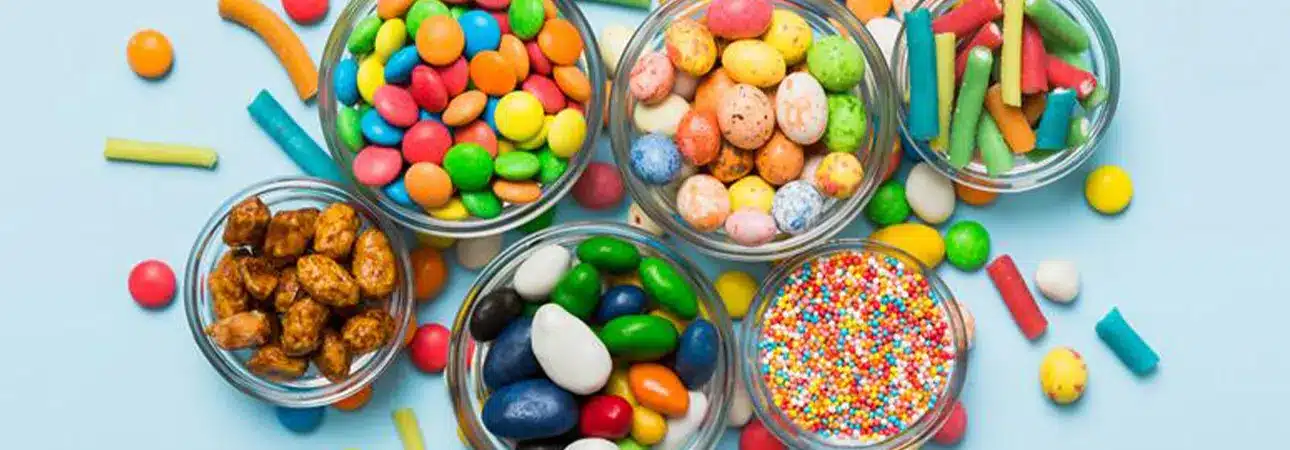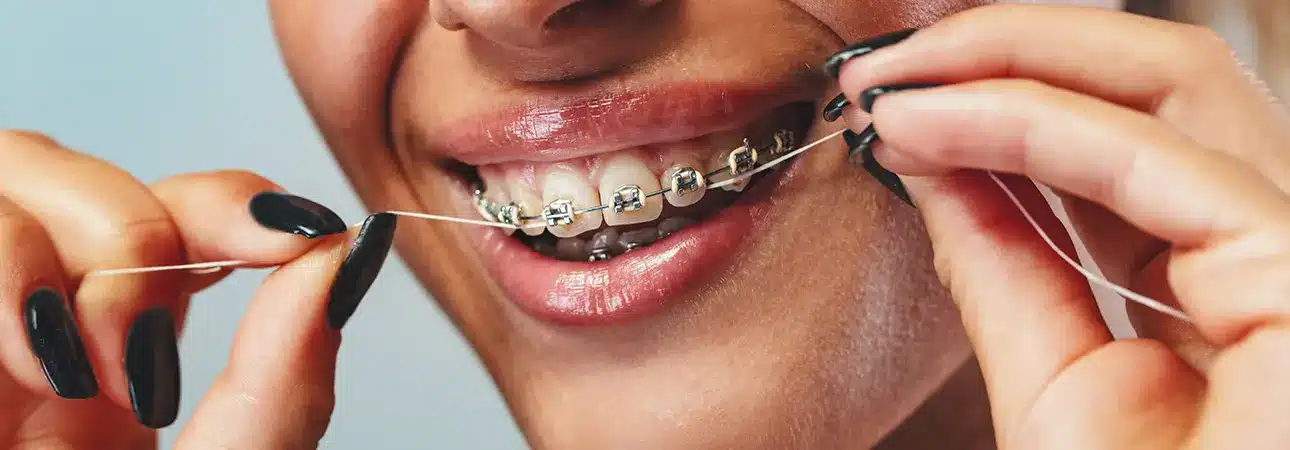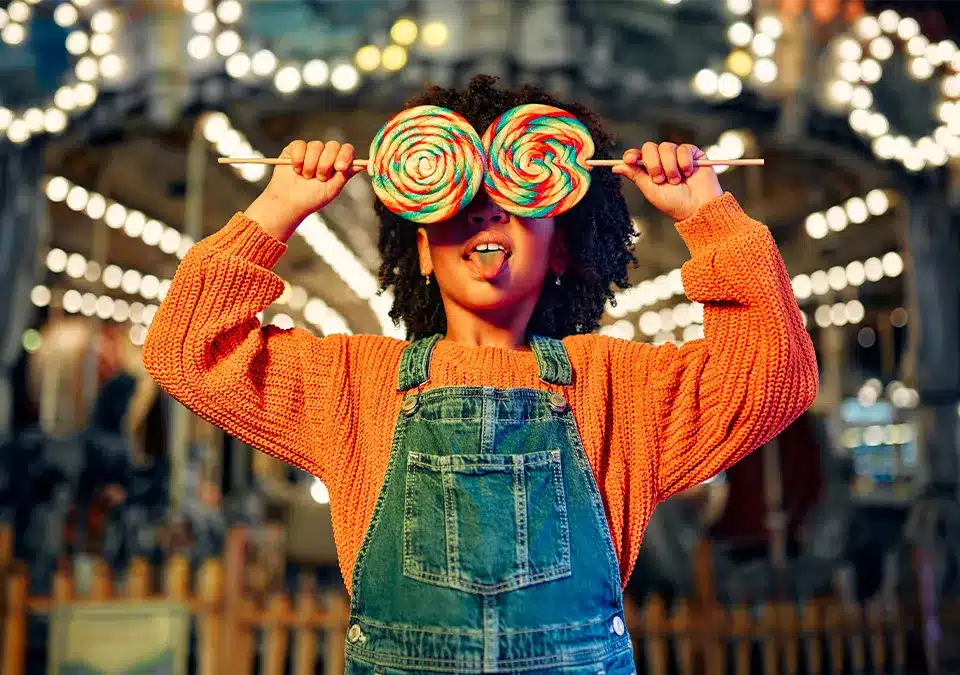Ah, the age-old battle: dentists vs. candy. It’s a rivalry as old as Halloween itself. One side wields floss, fluoride, and firm warnings. The other side? Delicious, sugary joy wrapped in shiny foil. But despite our constant warnings, one thing hasn’t changed: people love candy. And we get it! You’re not giving up your gummy bears or chocolate bars any time soon, and frankly, we’re tired of ruining the fun.
Instead, let’s discuss how candy affects teeth, who’s more at risk of harm from high sugar intake, and how to indulge from time to time while mitigating the negative impact on your oral health.
The Worst (and Not-So-Bad) Candies for Your Teeth
All candy isn’t created equal—some treats are sneakier troublemakers than others.
Worst Offenders:
- Sticky candy like caramels, taffy, and gummy bears cling to the teeth. That stickiness means more time for harmful bacteria to feed on the sugars, which produces acid that harms your tooth enamel.
- Sour candies may be low in sugar, but don’t let that fool you. They’re highly acidic, which can erode the outer layer of your teeth faster than you can say “warhead.”
- Hard candy lingers in your mouth longer, keeping sugars swirling around your teeth and increasing the risk of tooth decay.

Less Harmful Options:
- Chocolate, especially dark chocolate, is your dentist-approved guilty pleasure. It melts away quickly and doesn’t stick around (like those sticky candies we just mentioned).
- Sugar-free gum isn’t technically candy, but it satisfies the sweet tooth and boosts saliva production, which helps neutralize acid and rinse away food particles.
- Candy with xylitol (a natural sweetener) may reduce bacteria and increase saliva, which might even push it into the helpful category. It’s practically a loophole!
Who’s More at Risk?
We’re not all affected by high sugar intake in the same way. In some dental situations, candy has a bigger impact than in others, and these are the patients that need to take a little more care.
- Kids and teens: Their tooth enamel is still developing and more vulnerable to decay and cavities. While baby teeth do fall out, we still want to create good habits and avoid any discomfort before adult teeth grow in.
- People with dry mouth: Saliva is your mouth’s built-in defense against bad bacteria and lingering food particles. If you’re low on it, sugary foods can do more harm.
- Those with braces: Sticky candy + brackets = a nightmare waiting to happen. It makes it really tough to clean around your teeth properly.
- Patients with existing dental work: Candy can dislodge fillings, damage crowns, or sneak into those hard-to-brush spots around dental implants.

Smart Habits to Protect Your Teeth
Good news: you don’t need to live a candy-free life. With a few smart habits, you can balance sugar cravings with oral care.
- Brush your teeth twice a day with fluoride toothpaste, and don’t forget to floss. This is what we would recommend anyway, but worth repeating for candy consumption days. Having said that…
- Wait 30 minutes after eating candy before brushing. That gives your enamel time to recover from acid exposure.
- Drink water right after eating candy to rinse your mouth and dilute sugars.
- Chew sugar-free gum to boost saliva and protect against decay.
- Don’t snack on candy all day. Eat it in one sitting so your mouth isn’t under constant attack.
So… How Much Candy Can You Really Eat?
This is the million-dollar question. There’s no magic number, but here’s the deal: moderation matters more than complete abstinence. If you’re brushing, flossing, and getting regular checkups, the occasional treat won’t doom your smile.
A good rule of thumb? Enjoy candy as a treat, not a food group. You’re on the right track if it’s a once-a-week splurge rather than an everyday habit. And try to balance it with healthier habits, like a diet low in processed sugars and rich in crunchy veggies and calcium.
Other Contributing Factors to Cavities
Candy isn’t the only culprit when it comes to contributing to tooth decay.
- Sugary drinks like soda and energy drinks bathe your teeth in sugar and acid.
- Refined carbs like white bread and chips break down into sugars that feed harmful bacteria.
- Frequent snacking keeps your mouth in a constant state of sugar overload.
It’s your overall habits that make the biggest impact; it’s best to think about your healthy habits as a whole rather than in isolation to get a true picture of impact. Brush your teeth regularly, keep your sugar intake in check, visit the dentist, and don’t forget to drink plenty of water. Oral health is a team effort, and here at Dentistry Thirty Two, we’re happy to help.
Final Thoughts
Candy is technically bad for your teeth, but indulging in it doesn’t have to cause drama. The trick is to enjoy it with care, build good habits, and treat your teeth kindly in between sweet snacks. At Dentistry Thirty Two, we’re not here to guilt-trip you. We’re here to help you protect your smile—one chocolate square at a time.
Need a checkup or have questions about your oral health? We’re just a call away.

